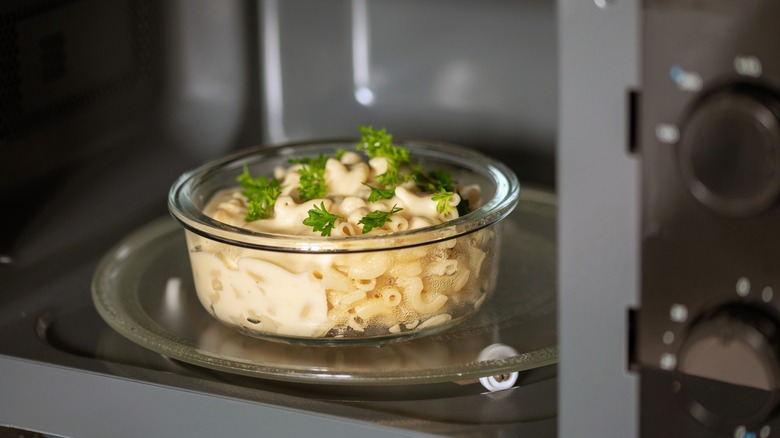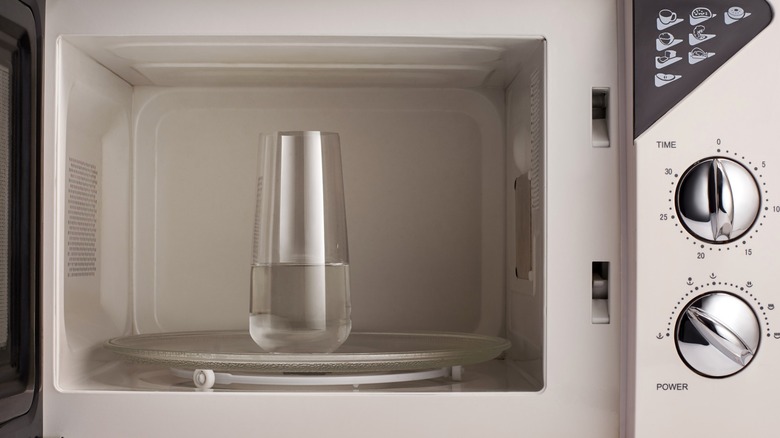The Microwave Trick That Gives Reheated Food A First-Day Taste
In my household, the microwave is primarily for thawing meat. Even convenience foods intended to be cooked in the appliance, like Hot Pockets, are prepared in the air fryer because they get thoroughly heated without cheese seeping out the sides. That said, I'd be lying if I claimed I never eyeballed the microwave from across the room and became convinced that it would do a fine job of reheating some leftover pizza. Generally speaking, when I succumb to the allure of a quick reheat and that once-delightful slice comes out with a dried-out, cracker-like crust topped with cheese bearing a pool of oil, I am reminded again why Chef Mic is relegated to solely defrosting meat.
However, there is a trick that can prevent that pizza crust or other once-tasty foods from becoming as arid as the Sahara in the microwave. A simple glass of water set alongside your meal in the appliance will keep foods lacking moisture content from becoming even drier after getting zapped. You don't need to go overboard with a tall glass either — just 2 to 3 ounces will suffice.
Most folks assume this hack works because the water creates steam as it heats, which would incorporate moisture and thus prevent foods from becoming dry, but it's a bit more complicated than that. The reason this trick works doesn't actually have anything to do with steam from the water; it works because the liquid acts almost as a diversion for the microwave radiation.
The water trick slows a microwave's heating process
In the microwave, it takes a couple of minutes for water to begin boiling, hence creating steam. When you pop a slice of pizza or food similar in size and texture in the appliance, you generally get the job done in about 45 or so seconds. The water never comes to a boil, and no steam has been generated. This glass of water trick works because it acts as sort of a dummy load. When a little bit of water is warmed next to your leftovers, the actual microwaves that heat the food are also working to heat the liquid. That slightly reduces the rapid rate of heating, allowing food to reheat slower and more evenly.
While steam can help keep some foods from drying out in the microwave — like chicken thighs, mashed potatoes, or leftover pasta — you don't necessarily want to introduce that much moisture to something like pizza. Instead of making the slice come out tasting as good as when it was first cooked, those drier areas can become soggy, which I think we can all agree is a dinner-ruiner and not the intended goal. That's why heating up a glass of water with your pizza can save the day, and trapping steam with a microwave-safe cover is a better choice for foods that won't get soggy from the moisture.

